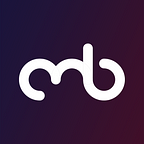Be a champion for all, including your introverts
By Jeri Bingham
Think about the fact that nearly half all employees have a preference for Introversion. This means that half of your workforce is more productive working in solitude, shines in one-on-one interactions and prefers a less stimulating, noisy office environment. This half leads by gathering input from others and taking time to think things through. They are skilled at listening and observing.
The other half of your workforce — those with a preference toward Extraversion — enjoys working in groups, shines in large meetings and prefers a more stimulating environment. This half leads by delegating, takes more risks, and is skilled at being decisive and charismatic.
Is one half better for your business than the other?
As a proud Introvert, I can attest to some of the mistakes companies make by not knowing, or acknowledging, the diversity of their workforce as it relates to personality style.
It is important to understand that Introverts are different, and so are our needs. Your company, no matter how large or small, most likely has a workforce where half prefer Extraversion and half prefer Introversion. Some Introverts may know their personality type and own it, while others may know, yet masquerade as something they’re not to “fit in.” Whatever the case, if your company culture and reward system is structured to cater to those with a preference toward Extraversion, you could be stifling the creativity, productivity and output of half of your workforce. This could impact a company’s brand, mission or bottom line.
Unlock your company’s potential by embracing both Introversion and Extraversion
Does your company curate an environment where everyone thrives? Do your employees feel valued, heard and seen for their substance, not just their gift of gab? Does the culture of your organization embrace diverse work styles and allow employees the latitude to be productive in a way that’s most comfortable for them? If the answers to these questions are “no” or “I don’t know,” then there is work to be done in enacting some changes.
Studies have shown that companies with diverse leadership, boards and employees tend to perform better. They are able to address business opportunities and challenges with input from people with different experiences and perspectives. It’s time for employers to let go of the one-size-fits-all notion of employee engagement and leadership (which tends to lean toward Extraversion) in favor of a more inclusive model that cultivates the talents of all of their employees.
Recognize the challenges as Introversion-preferring employees transition back to the office
Many companies in 2020 transitioned to a remote model and allowed employees to work from home. After a year and a half away from the office, recognize that, particularly for Introverts, a return to the office is riddled with angst. There are, naturally, the health and safety concerns around the pandemic.
However, there is also trepidation about leaving a home work environment that allowed Introverts to excel and be more productive than they were in the office. Leadership messaging about the return to the office is often full of excitement about “being together again.”
Surely everyone missed in-person meetings, water cooler chats, lunch plans with colleagues, after work drinks, and hours of interaction and socialization with others outside of their homes, right? The answer is not necessarily a resounding “yes” for your introverted employees and colleagues.
Tips for transitioning employees back to the office
Leaders helping their organizations navigate a transition back to the office can do a number of things to make the transition successful and foster a culture/environment that brings out the best in all of your employees — especially your introverts.
Survey your employees and ask about their preferences for the environment and remote work flexibility. This will not only provide you with valuable information that can guide office policy and increase productivity, but it also demonstrates that leadership cares about employee well-being. Going a step further to truly embrace the needs of Introversion-preferring staff, organizations can consider cultural shifts that allow that portion of your workforce to thrive:
- Provide a designated office or conference room that can be reserved by staff to work in quiet/solitude if they need to meditate, focus on a project, or take a brief break from the overstimulation of the office environment.
- For half or full day meetings, designate regular breaks that allow participants to stretch and recharge their mental energy and focus.
- Whenever possible, provide an agenda a day ahead of meetings and include expected discussion or outcomes of the meeting. Introverts are typically more analytical thinkers than “on the spot” contributors and this will help them better prepare for the conversation.
- Hold a moratorium on “ice breakers.” For Introverts, these feel like a performance for which we aren’t prepared. Instead, send a fun question ahead of time and ask people to pair up and share with a colleague at the beginning of the meeting. For those who are comfortable sharing, allow them to share openly in the meeting.
Small changes can make a profound impact. Do not discount the potential and contributions of, potentially, half of your workforce just because they are not the squeakiest wheel. Be inclusive. Be intentional. Be a champion for all, including your introverts.
About the Author
A self-proclaimed introvert strategist and founder of HushLoudly, a WGNradio.com podcast, Jeri Bingham is dedicated to amplifying the voices of introverts. She is the founder of Black Introvert Week (February 8–15) and has been featured in the Chicago Tribune and Color Magazine. She is a contributing writer for Rolling Out and has been interviewed on its AM Wake Up Call show.
